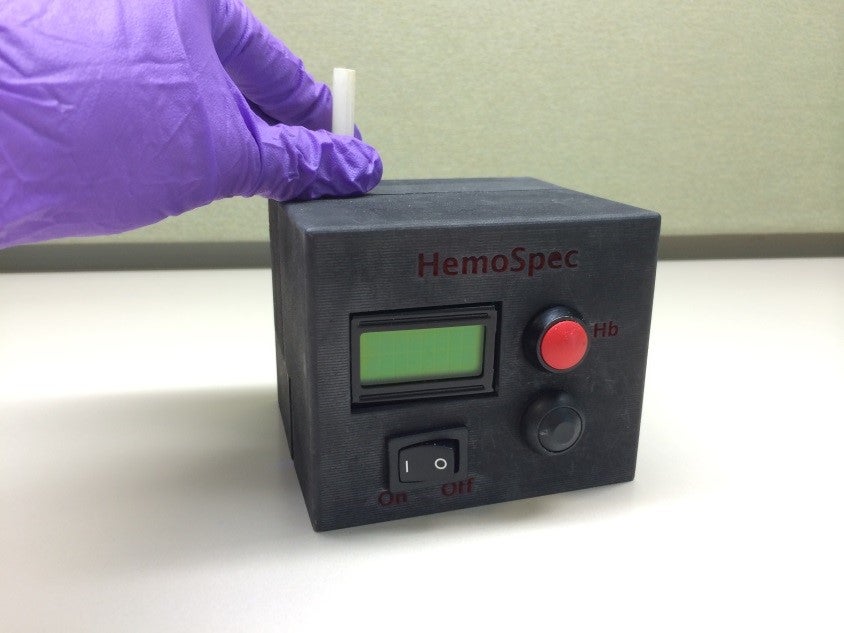HemoSpec: A paper-based method for diagnosing anemia at low cost
Overview:
Anemia affects a quarter of the world’s population, and a lack of appropriate diagnostic tools often prevents treatment in low-resource settings. Though the HemoCue 201+ is an appropriate device for diagnosing anemia in low-resource settings, the high cost of disposables ($0.99 per test in Malawi) limits its availability. We are investigating using spectrophotometric measurement of blood spotted on paper as a low-cost (<$0.02 per test) alternative to HemoCue cuvettes.
For this evaluation, donor blood was diluted with plasma to simulate anemia, a micropipette spotted blood on paper, and a benchtop spectrophotometer validated the approach before the development of a low-cost reader. We optimized impregnating paper with chemicals to lyse red blood cells, paper type, drying time, wavelengths measured, and sensitivity to variations in volume of blood, and we validated our approach using patient samples. Lysing the blood cells with sodium deoxycholate dried in Whatman Chr4 chromatography paper gave repeatable results, and the absorbance difference between 528 nm and 656 nm was stable over time in measurements taken up to 10 min after sample preparation. The method was insensitive to the amount of blood spotted on the paper over the range of 5 mL to 25 mL. We created a low-cost, handheld reader to measure the transmission of paper cuvettes at these optimal wavelengths. Training and validating our method with patient samples on both the spectrometer and the handheld reader showed that both devices are accurate to within 2 g/dL of the HemoCue device for 98% and 95% of samples, respectively.
Further work has focused on improving accuracy and precision of both the paper cuvette and hand-held reader. We additionally discovered that special care needs to be taken when evaluating fingerprick blood samples, as successive drops of blood from a fingerprick have clinically significant differences in hemoglobin and other hematology parameters.
Publications:
Meaghan Bond and Rebecca Richards-Kortum. Drop-to-Drop Variation in the Cellular Components of Fingerprick Blood: Implications for Point-of-Care Diagnostic Development. Am J Clin Pathol, 144:885-894, 2015.
Meaghan Bond, Jessica Mvula, Elizabeth Molyneux, and Rebecca Richards-Kortum. Design and Performance of a Low-Cost, Handheld Reader for Diagnosing Anemia in Blantyre, Malawi. IEEE Healthcare Innovation Point-of-Care Technologies Conference Proceedings, PMCID: PMC4409007, 2014:267-270, 2014.
Meaghan Bond, Carlos Elguea, Jasper S. Yan, Michal Pawlowski, Jessica Williams, Amer Wahed, Maria Oden, Tomasz S. Tkaczyk, and Rebecca Richards-Kortum. Chromatography Paper as a Low-Cost Medium for Accurate Spectrophotometric Assessment of Blood Hemoglobin Concentration. Lab on a Chip, 13:2381-2388, 2013.

